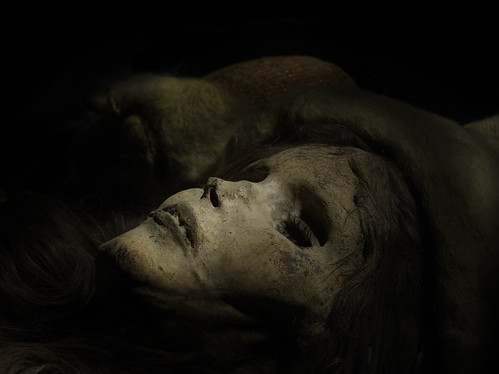 One of the biggest archaeological discoveries ever made in China landed in America earlier this year. A trio of Tarim Mummies was brought to the United States for the first time in a special exhibit at the Bowers Museum in Santa Ana, California.
One of the biggest archaeological discoveries ever made in China landed in America earlier this year. A trio of Tarim Mummies was brought to the United States for the first time in a special exhibit at the Bowers Museum in Santa Ana, California.
The mummies are renowned for their unique appearance: while the ancient bodies were found well-preserved in Chinas western region, some of them bear more of a physical resemblance to early Europeans.
People will have until July 25 to view the ancient bodies, but the American public will have two more chances to view the exhibit later this year and in 2011.
The exhibition, called Secrets of the Silk Road: Mystery Mummies of China is slated to move across the country. Its next stop will be at the Houston Museum of Natural Science, where the exhibition will be on display from August 28, 2010 to January 2, 2011. Then it will be held at Philadelphia’s University of Pennsylvania Museum of Archaeology and Anthropology from February 5, 2011 to June 5, 2011.
The exhibit provides a look at how cultures from the East and West were interacting with each other along the Silk Road. The 150-plus items on display – many dating back thousands of years – come from thecollections of the Xinjiang Uyghur Autonomous Region Museum and the Xinjiang Institute of Archaeology in Urumqi in northwest China.
The three ‘caucasian’mummieson showinclude the Xiaohe Beauty, a mummy that dating more than 3,800 years. The body is so well-preserved that its eyelashes are still intact. Also being shown is an infant wrapped in a woolen blanket, and the Yingpan Man, who wears a gold-foil and white mask.

